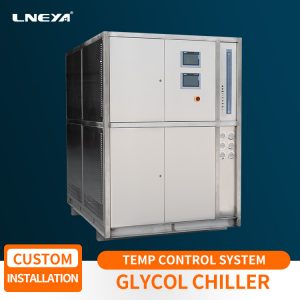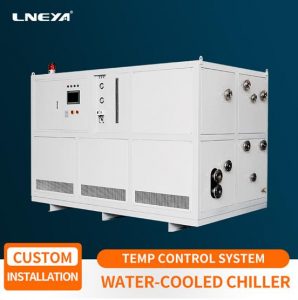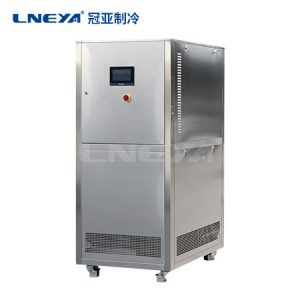Which reactions need temperature control in the process of chemical and pharmaceutical production?
Precise temperature control plays a crucial role in the reaction process during synthesis/crystallization in the production of chemical and pharmaceutical products. In the field of fine chemicals, many chemical reaction processes and crystallization processes are carried out in a low temperature environment. When the reaction is carried out in a low temperature environment, the amount of impurities produced is obviously reduced, and the purity of the product is increased, so that the reacted product has a high selectivity. Compared with the traditional process technology, a reasonable selection of the working temperature range can improve product quality and synthesis quality, improve production efficiency and reduce production costs. The premise of realizing all this is the control of the dynamic temperature in the reaction process. In the crystallization process of pure product, in order to obtain higher product quality, it is necessary to strictly follow the specified cooling rate.
Decarboxylation is a chemical reaction that removes a carboxyl group and releases carbon dioxide (CO2) and replaces it with hydrogen atoms. The term refers to the states of reactants and products. Decarboxylation is one of the oldest known organic reactions because it usually requires simple pyrolysis and distillation of volatile products from the reactor. Heating is required because the reaction is less favorable at low temperatures. Yield is highly sensitive to conditions. For example, the temperature required for the polar activated decarboxylation reaction method is as high as 140 °C.
Winterization is one of the methods of crystallization separation. It is to stir the oil slowly, control the cooling speed, and cool it to about 4~6 ℃. The solid fat is formed into larger crystals and separated out. Winterized oil is characterized by passing the freezing test, that is, it is not cloudy after 5.5 hours at 0 °C. Another example is that the whole process of enzyme extraction is kept at low temperature because enzymes are proteins. Proteins are denatured at high temperatures, thereby losing their activity. The temperature is too low, which is not conducive to the extraction operation. So careful temperature management in the processing plant not only ensures high extraction rates, but also efficient recovery of the solvent used. It is conceivable that temperature control plays a decisive role in the extraction process.
Our LNEYA temperature control system equipment can be used to accurately control temperature in small laboratory rotary evaporators to large factory pilot systems. Temperature control range -120℃~350℃, efficient production stability and repeatable results, refrigeration power from 0.5~1200kW. Superior performance, high precision plus or minus 0.1 ℃, high intelligent temperature control settings, 7-inch 10-inch color TFT touch screen graphic display.
Raccomandazioni correlate
-
The difference between a large refrigeration and heating circulator and a test chamber
8911. For the high temperature test under special circumstances, the high and low temperature test chamber may not meet the requirements. Generally speaking, the high temperature upper limit of the high and low temperature test box is 200 ℃, and its ...
Visualizza i dettagli -
Selection and installation of the expansion valve for recirculating chillers
971Regarding today's topic, we have thefollowing analysis.The selection of expansion valve plays animportant role in the performance of the recirculating chiller refrigerationsystem. The correct choice of expansion valve will maximize the use of t...
Visualizza i dettagli -
Descrizione del principio di funzionamento della camera di prova d'urto ad alta e bassa temperatura
1046Spot high and low temperature impact test chamber, also known as three-box high and low temperature impact test chamber, high and low temperature impact test chamber is mainly composed of low temperature storage chamber, high temperature storage c...
Visualizza i dettagli -
Introduction of LNEYA Heating Cooling Circulator Thermostat
1153Nowadays, the problem that plagues the pharmaceutical and chemical industry is the problem of temperature control. With the increasing industry demand and temperature control requirements of the pharmaceutical and chemical industry, the use of hea...
Visualizza i dettagli
 Refrigeratori industriali LNEYA Produttore Fornitore
Refrigeratori industriali LNEYA Produttore Fornitore














